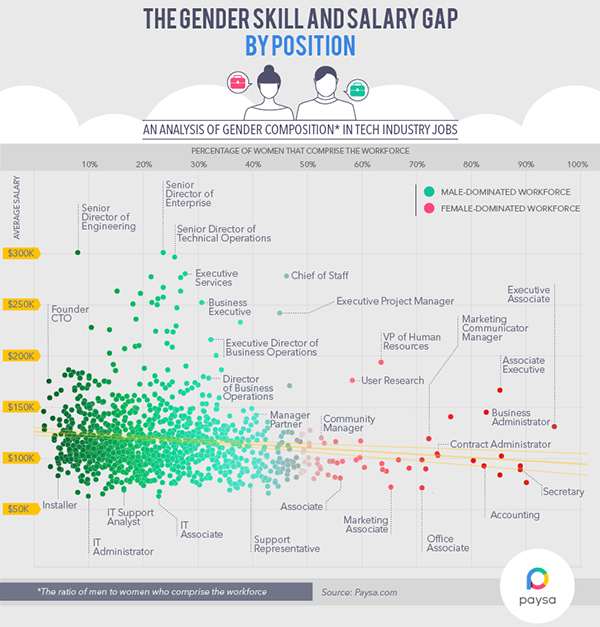The digital age is upon us! And it seems almost anything we come into contact with these days has a digital component to it. Yet, while we’re busy scrolling our social media feeds, shopping online, and livestreaming videos, we never stop to think about the people behind the scenes.
A new report released by Paysa—a web-based platform that specializes in salary data for employees—focuses on the current wage and skills gap in the IT industry.
The report looked at the average salary and the ratio of men to women that comprise the workforce, which was detailed for 62 early-stage companies and 1,143 jobs with a C-level or Founder title, according to Paysa information. Early-stage companies have been defined as those able to begin operations but not currently at the stage of commercial sales or manufacturing. What did the findings conclude?
Paysa found that women account for about 26% of the IT workforce. Of the more than 1,000 jobs looked at within the tech industry, there were only 50 positions in which women make up 50% or more of the job holders. For these positions, the average starting salary was $104,159.
According to the report, Executive Assistant positions—which were staffed by women in 95% of the jobs examined, earn an average salary of $131,000 a year. Also, 63% of women (in the jobs examined) hold Vice President of HR positions, which pays an average salary of $104,000. Other findings include:
- 45% of women hold the title of “Executive Project Manager” and earn an average of $243,000.
- 46% of women hold the title of “Chief of Staff” and earn an average of $278,000.
How do men compare, in terms of pay? According to the report, the largest difference in pay comes from IT Services, where there is a 13% gap in the salaries between male and female workers. While the high end of pay disparity results in a 13% difference in favor of men for IT Services, the highest difference in favor of women is almost 9% in the Publishing and Printing sector.
The infographic below highlights the gender composition of jobs in the IT Industry. For more information on this report, visit the Paysa website.

